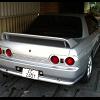Rb20 Oil Control
Announcements
-
Similar Content
-
Latest Posts
-
Nah, turn the boost up, break the gearbox, and enjoy leaving it parked for a few years while you save for a better box...
-
I see those two Stageas have the "punched 40mm hole" deregistered Japanese number plates 👍 Nice kouki group shot with the different colours too.
-
Yeah I made that post way too early, sorry I must have assumed it was bad because it's a 20+ year old thrashed shitbox lol. It was just a loose exhaust bolt.
-
Like others have said, drop the power to give your drivetrain a % of reliability until you can up the drivetrain reliability It isn't rocket science, build power to the weakest link with a % of safety Whilst upping the the reliability of the drive train is costly, there's no point in having the engine make big power if it keeps eating the drivetrain....ask me how I know, I had the tow truck on speed dial for a few years, and I spent huge amounts of money fixing issues and breakages that really would have been cheaper in the long run if I did it right the first time Me, I like a nice sized fudge factor, that keeps me off the tow truck
-










Recommended Posts
Create an account or sign in to comment
You need to be a member in order to leave a comment
Create an account
Sign up for a new account in our community. It's easy!
Register a new accountSign in
Already have an account? Sign in here.
Sign In Now